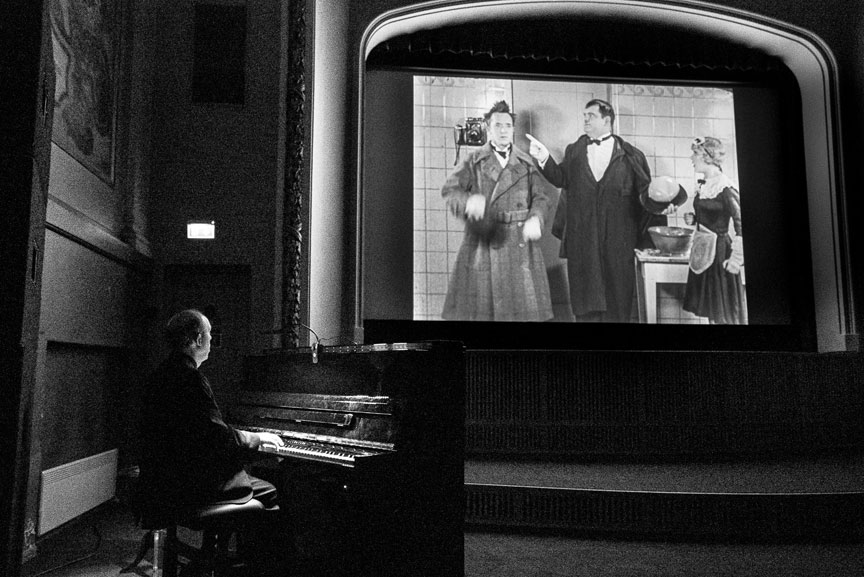There are two things I often have to ask a theatre to adjust when I arrive at a new venue. One is that the piano be turned around so it’s not facing the audience, and the other is to turn down the amount of light on me and the piano. People are coming to see the film, and not hear a concert, after all.
I get it. Most places are used to setting up for a musical performance, and so having me face the audience and be lit so I can be seen is what most performers are set up for. For me, anyway, the experience of silent film is that the audience be drawn up and into the universe of the film. That’s part of the function of the music.
One of my silent film pianist cohorts at MoMA, Stuart Oderman (1940-2017), used to say that silent film music should be like air conditioning, and that when it’s working you don’t notice it. Lee Erwin (1908-2000), my silent film accompaniment mentor and friend, often said the best thing you can hear from someone after a show is “I forgot you were playing.”
At shows, I make sure the piano is facing the screen so I can see the movie, and I have just enough light on me or the piano so I can see the keys. Just enough light. I don’t want people to be aware of my presence once the film starts. Lee often talked about bugaboos he had with accompanists who would do things during a show that called attention to them. Everything from sound effects and recognizable music to literally having a microphone at keyboard or organ console so as to let the audience know what they were about to do to match the onscreen action.

In the current cultural notch of live-streaming just about everything, silent film programs are being presented by a number of people, theaters and archives. I started doing a weekly show on March 15th. I use a single camera (my iPhone, on a tripod), my Baldwin acoustic piano and a video projector. From the beginning I have investigated the various live-streaming “TV control-room” software programs available for this sort of thing.
Most of them allow for a split-screen or a picture-in-picture option, and I could certainly use this to include a shot of me at the piano while I accompany a film. It would have the same look as you might see at a live show. The big screen in front of you and off to the side, smaller, the pianist playing music.
I’ve considered the idea of using this feature, when and if I move over to one of these “control-room” softwares. For the time being anyway, I’m thinking it may not be the way to go.
Looking at a TV or computer screen is a different aesthetic than being in a theater or cinema. Even if it objectively looks the same. In a movie theater your eyes and attention and your right-brain “tune out” the accompanist during the film. Even when there’s a 18-piece chamber ensemble. In a real space, that’s what your brain does. But not when it’s all flattened and smaller. It’s harder to tune that part of what’s in front of you out. In Stuart’s analogy about the live music, it’s like seating someone next to the air conditioner. You’re comfortable, yes, but there’s this cool breeze blowing on you the whole time.
Even if I’m able to play back video files directly through software, I’m going to keep that shot of me at the piano where I play viewers into the film as my wife pans from me up to the image on the wall (and then we can dissolve into the video). It replicates that right-brain trance-entering segue that happens in a movie theater, so you can forget I’m there for a while and get drawn up into the crazy world of silent film comedy.